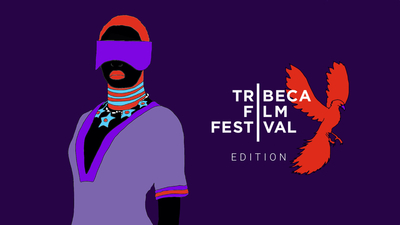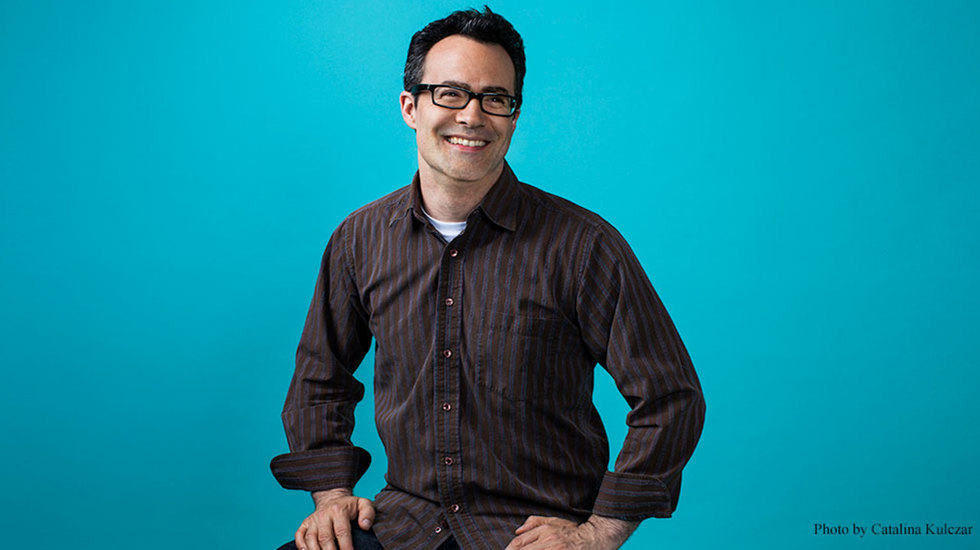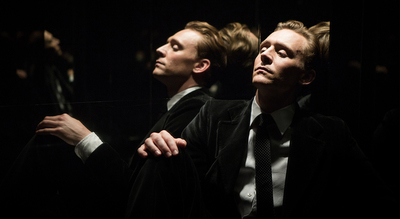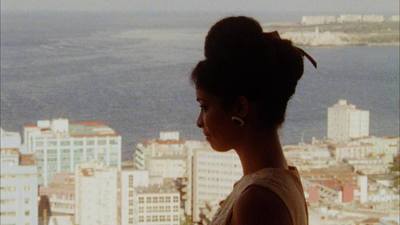
BY JESS KIMBALL LESLIE |
Technology for Artists: An Interview with Clive Thompson
"Oh my God, this stuff is totally coming. It's going to be awesome." In this fascinating conversation, the digital technology writer talks about the future of media as predicted by everything from pencil sharpeners to 'Sherlock.'

In late December I interviewed Clive Thompson, author of Smarter Than You Think: How Technology is Changing Our Minds for the Better.
Jess Kimball: Let’s get right to one of my favorite ideas from your book: on page 44 you say, “Our ancestors learned how to remember, and we will learn how to forget.”
Clive Thompson: I think that epiphany comes from conversations that I had with Cathy Marshall. Cathy’s a researcher from Microsoft; she has spent years studying how people deal with their exploding digital archives. What do people do with it all? I've been meaning to write a piece one of these days that’s just about her work. I said, "Isn't it weird that we have to deal with all this stuff?" I take photos of my kids on my iPhone, on my Nexus, and now I've got 4,000 photos or so that I may never look at again.” Cathy said that we’re facing a question archivists have long had to deal with, which is, ‘What of this massive corpus of stuff is worth preserving? What should we remember, and what should we forget?’
Up until now, within our entire 200 year photography experiment, we only took a photo when we wanted to preserve it.
Jess Kimball: So how are we learning to forget thus far?
Clive Thompson: Some of it might be active acts of saying, "I don't want all this stuff." We're seeing that already with SnapChat. If you talk to people who use SnapChat, they'll give you a couple reasons why they like it. One idea is that it's evanescent: the photos aren't being stored, so they are more conversational, more fun, and people feel more free to just do silly, stupid things.
Secondarily, people like the idea of not clogging their phone with lots of photos because the SnapChat photos aren't saved. People could do like 30 SnapChats a day but after a month, they weren't going to have to go through this onerous task of going, "All right. My phone's full. What am I going to get rid of?" That turns out to be an emotionally difficult moment. When you think about photos, it’s a really funny thing because up until now, within our entire 200 year photography experiment, we only took a photo when we wanted to preserve it.
Jess Kimball: And now part of photography’s purpose has shifted.
Clive Thompson: Now that a photo can be sent in the moment to just say, "Here's what I'm doing," it can become a communication act that's completely separate from the act of archiving and saving. It’s taking us a long time to decouple the photo as an expressive act from the photo as a permanent archive.
Jess Kimball: So nowadays we all have these big banks of personal, digital ephemera: our photos, videos and text. I think the existence of these banks creates a set of fascinating challenges and opportunities for artists. Take the MTV show Catfish, they’ve created a new documentary style using people's Facebook posts, iChat sessions, and iPhone pictures to enrich and contextualize a story...
Clive Thompson: Absolutely.
Jess Kimball: ...And that collateral completely changes the emotions that you have about the characters’ love lives.
Clive Thompson: I think you're right, they've really nailed it. There was that great little thing that went viral on YouTube, a relationship breakup purely through the Facebook interface...

It depicts all these weird documents in our lives: bits of conversations that are written down, bits of video like Skyping or Google Hangouts. Again, this is one of the reasons why I think it's so interesting to pay attention to the aesthetics of these new records that we’re making because they violate all the aesthetics of how we used to use recording devices.
Jess Kimball: I never thought of it like that, but it’s so true.
Clive Thompson: I like to joke that it would be interesting to figure out what the most common shot in the entire history of the moving image is, if you took every second of recorded image, every movie and every home video and everything on YouTube and categorized it into types of shots. There’s the tracking shot, there's the close up, but I'll bet the most common shot someone staring into a web cam or into a phone cam.
Jess Kimball: As you reference it in the book, the “confessional shot” from reality television.
Clive Thompson: It's almost Freudian, the confessional un-baring of the soul to a camera ensconced in your bedroom. Now the confessional shot, by Hollywood standards, is unbelievably ugly. The lighting's bad, the talking into the camera is always a little off, and you're breaking fourth wall. You're acknowledging that there's something behind the camera; it was rarely seen in movies and when it was seen, it was very jokey.
In the early days of video games, in the 80's and 90's, there was this libel that everyone was just ‘staring at the screen,’ and it was always written by people who didn't play video games.
Jess Kimball: I’m looking forward to seeing the John Hughes of the future bring our digital lives to the big screen in a new way: I mean, think about the cinematic opportunity, a hundred 17-year-olds are silently staring into their iPhones right now but their minds are being blown, they’re texting with some girl or guy and they’re learning that love exists! They’re having the times of their lives, but in an altered form.
Clive Thompson: Those kids are going to grow up and realize that there's a way to actually write about this stuff that actually honors their experience. I think one of the reasons that I'm sensitive to this, too, is that I'm a video game player. In the early days of video games, in the 80's and 90's, there was this libel that everyone was just ‘staring at the screen,’ and it was always written by people who didn't play video games. My defense was, "Well, we're not just staring at the screen. There's actually something very complicated going on in our heads. There's this enormous thinking process going on and we're also getting a huge amount of socializing outside of the game." In fact, often, we were playing with someone there with us and talking about it. This was all invisible to people that had nothing but contempt for the form.
Jess Kimball: What type of cinematic devices will we use in the near future to depict these stories in movies and TV?
Clive Thompson: One interesting, really fun example is the BBC version of Sherlock. Whenever Sherlock would look at a camera and write something, the text would sort of float in front of them. There's this one moment where a police commissioner is giving a press release and Sherlock sends a text to all the 30 journalists at once, simultaneously, basically saying, "He's lying," or something like that. Tim Carmody wrote a wonderful essay about [some of] this, and it was picked up and riffed on by my friend Michele Tepper, who is a designer.

Tim and Michele were fascinated by the use of diegetic texts: a text that back in the old days of silent movies would show up in between each scene and say, "Here's what they said.” It was a way of saying, "Well, we don't have any way to capture the audio but we need to let people know what's going on in these people's heads, so we're going to insert these text frames.”
Jess Kimball: When I think about the future of the TV, film, and tech worlds, I see a common problem, which is that they all have to figure out how to handle advertising with integrity. Advertising is creepily, insidiously everywhere in content now. A couple months ago you made my favorite ever point about the current state of advertising: Facebook is only making $5 per year, per user in revenue off of its current ad-based model. I mean, seriously! All that sacrifice of content quality for 5 lousy bucks?
Clive Thompson: I know, exactly. You could bill that to me on my mobile phone and I wouldn't even notice it, and you could lay off the ads...
Jess Kimball: You could bill me $10!
Clive Thompson: You could probably lay off half your staff, and then you could start designing features that actually served users instead of serving advertisers.
Jess Kimball: I think that adding the word “free” to the homepage was a fundamental error on Facebook’s part. They took this precious experience that is in itself so personal and fragile and expressive - the creation of a person’s life log - and by being deceptive, they made their own product worse.
Clive Thompson: It would be interesting at this point in time if they copied LinkedIn, where there's a free model but there's also a paid model. The paid model has no ads, different algorithms, and more control. There’s also Evernote, which offers a free version but if you want the cool stuff, then you pay for it. The model allows them to never have to think about ads; it’s a business that doesn’t have to scour your memory to advertise. The CEO, Phil Libin, is really insistent on it. I hope he remains CEO for awhile.
Jess Kimball: I'm really waiting for Hollywood to learn this lesson of “there is a better way,” because I feel like the big studios especially have gravitated toward a model where the Fortune 500 brands are there sitting next to the screenwriters and tapping them on the shoulder, like, "Please mention Tide 19 more times.” When are they going to learn how destructive that behavior is? How a critical mass of people will pay to circumvent it? Hello, HBO...
Clive Thompson: It's terrible. Actually, it's really bad in TV. It’s something my wife, Emily, has written a bunch about. It's happening all the time. One of her last stories for New York Magazine was all about branded product placement and TV.
In some respects, the VCs are like inadvertent Medicis.
Jess Kimball: Do you see a way past this - hopefully adolescent - phase of purposefully obfuscated advertising practices?
Clive Thompson: No, the truth is, I don't at the moment see a path beyond it. I am already amazed at how much cultural and cognitive value we've managed to get out of these services, given that they're based on selling ads. It’s a testimony to the human spirit! I’ve jokingly said that they're all probably doomed in the medium term, they’ve all got maybe a ten year run in the sun before people move on to something else. A few of them, like Facebook, will be temporarily profitable before they crash and are abandoned, but a lot of these services just get like paid for by venture capitalists who are never making any money. We have a lot of fun with these services and then we discard them. In some respects, the VCs are like inadvertent Medicis.
Jess Kimball: Totally!
Clive Thompson: They’re paying for experiences where we go, "Dude! This is awesome!” for two years and we're like, "Yeah, we're over it," and they never make a penny and everything goes away.
Jess Kimball: Only if instead of producing art, it's a Medici era that's producing...
Clive Thompson: An experience.
Jess Kimball: An advertisement.
Clive Thompson: My favorite ones are the ones that never get to the advertising level at all. They just burn through $20 million in VC capital and we have fun with their toy, and they go, "This is never going to work.” Then they pull the plug and it's gone. In one respect what made Twitter rise was its willingness to observe what its users were doing. When they created the @-reply, that was because they saw that people doing @-replies. They were like, "Oh, so people actually want to cross-talk.”
Then people started using hashtags. Twitter said, "Oh, they wanted to have theses floating conversations that are pinned down by words. Let's do that." As they followed what people actually wanted to do, they grew and grew and grew. Now they're at the point where they're starting to do things that people don't want and didn't ask for, because nobody said, "If I could just have an advertised post pushed to the top of my feed, that would be great."
Jess Kimball: "If I could just follow Denny's Restaurant and figure out what kind of YouTube clips it likes..."
Clive Thompson: “...If Twitter could just suggest a useless celebrity for me to follow, then Twitter would be much better."
Jess Kimball: In your book you do a fair amount of exploring the creative process and the importance of cognitive diversity. I must now reference your favorite pencil sharpener.
Clive Thompson: I've got a pencil sharpener right here. I'll show you one of the pencils that I use a lot of, Palomino Blackwings. And check these out, too, hundred year anniversary editions: Clive’s Tombow Pencils.

Anyway, yes, this is all classic cognitive diversity. The computer is an amazing tool for letting me get my notes and thoughts down, and sometimes I organize on the computer, but I find a lot by organizing just works better for me on paper. I really do love the type of thinking that comes out of my head when I'm using a pencil and paper. I almost never use pens. I'm either a computer or a pencil person. A pencil, because the lead wears down, after a while requiring its user to stop and sharpen it...
Jess Kimball: It has a pause built in.
Clive Thompson: It has a pause built in.
Jess Kimball: I just read the book Daily Rituals...
Clive Thompson: Yes, yes.
Jess Kimball: It really made me think about artists’ processes and cognitive diversity. Closely related, I’ve been Googling like a madman trying to find the word the science of using different, specific textures in a creative process, this type of paper, this pen, this desk...
Clive Thompson: The closest thing is probably embodied cognition, the idea that your thinking is not just in your head, it's in your body so the way that you get your ideas out and the way that you interact with information matters. There's a different type of feeling from reading something on a screen versus reading it on paper.
An amazing artist working in this world is Austin Kleon. He's pioneered a great form of modern poetry called blackout poetry; he takes a New York Times, blacks out all the words except for five or six and those read like a lovely little poem. He's a great artist and wrote a book called Steal Like an Artist. He’s blogged about his work flow... he actually has two desks. One of them has his computer, and his tablet, and the other one has his artwork and all his pencils and stuff so he can sit there and work without staring at screens. Man, if I had a little more space, I would do just that.

Artists need to really understand their tools to really push them to the breaking point. Heck, in the Renaissance you had to make your own paint and your own paintbrushes and pull your own canvases together and in the process of doing that, you wrestle so deeply, on a molecular level, with the materials you were using. I think that the same thing behooves people who are using digital tools.
[For example, as a writer] when I'm reading something, if there's something that I know I'm going to want to remember, I force myself to open up my Scrivener. I use Scrivener as a writing tool, a database of all my stuff.
I then clip the thing I'm seeing and make a note about what I think about it, right at that moment. That’s the generation effect: when you write about something, you actually synthesize it more deeply and you're going to remember it with greater ease because it becomes part of your meaning. If you just cut and paste stuff, it's like intellectual Olestra.
Jess Kimball: What did you think of The New York Times producing "Snowfall," something of homage to cognitive diversity? Did you agree with the naysayers’ arguments - that the ‘digital heehaw’ was essentially detrimental to the text - or did you think the piece’s overall effect was really futuristic and powerful?
Clive Thompson: I thought that it was pretty well done. I thought it was still prototypical but I loved the way the team tried to wrestle with the key issue facing media right now, which is what medium works best for what type of story and knowledge.
Only when you get a million people banging on something are you really going to stumble upon the awesome stuff.
There are going to be a lot of experiments. One of the things I think that we need to figure this out is that we need lots of people to start doing it on an every day basis, and not just professionals. Only when you get a million people banging on something are you really going to stumble upon the awesome stuff.
Jess Kimball: So a more sophisticated Storify or...
Clive Thompson: Well it's already started to happen. There's a tool it's called Scrollkit, it was basically designed as, "This is a tool to make Snowfall experiences."
Jess Kimball: Where do you think we’ll see art that’s really capturing us in the now, our screens and all, falling in love and living our lives as always, only now while staring through some Guerrilla Glass? Will it be TV, or film, or maybe a ‘zine of some sort, funded on Kickstarter...?
Clive Thompson: I think the place you would see it first is literary fiction, because they're good at depicting internal states. However I think a lot of literary novels have sort have been repelled by social media because literary novelists are very isolated folks; if you want to write a literary novels, you have to sit in a room, alone, for three years. It is hard, hard, hard work to do.
Jess Kimball: Know of any close-ish novels?
Clive Thompson: I don’t know of one, but you should ask Cory Doctorow. He would know.
Update: I reached out to the fantastic Cory Dotorow, and within minutes he suggested the novel “Constellation Games.”
Clive Thompson (cont'd): I know that years before us in Japan they had these cell phone novels - books written on cell phones, using the cell phone as a word processor which is kind of an awesome concept. All the utterances were of cell phone length, and in totality they created a novel. It became a kind of way to use the form to evoke what the form was doing to you. I blogged about them.
We were looking for something that looks like TV but maybe YouTube is just that, the future of TV.
You would expect that given that these novels were written on a cell phone they’re going to be shorter, stupider words, but actually the average linguistic complexity was slightly higher than that of the literary novels being published using regular word processors.
Jess Kimball: That’s a fascinating future indicator.
Clive Thompson: Oh my God, this stuff is totally coming. It's going to be awesome. We're going to see more and more of it. We're going to hate it. I'm 45 so at my age when the next great aesthetic wave arrives, I find it ugly because it violates all of my known dictates of quality. I was talking about this once with my wife [Emily Nussbaum]. We sort of wondered five years ago, "Wow, when is TV going to be reinvented online?" After a few years of not seeing it, I realized that maybe we were just looking for the wrong thing. We were looking for something that looks like TV but maybe YouTube is just that, the future of TV. We're not recognizing it because we're old people who expect it to look like our old TV.
Ten days later, Lindy West wrote this piece in response to her youthful Christmas compatriots not recognizing Angelina Jolie or Brad Pitt.
I laughed out loud and thought of Clive.
Jess Kimball Leslie is a trend spotter in New York.
(Top photo credit: Catalina Kulczar.)

